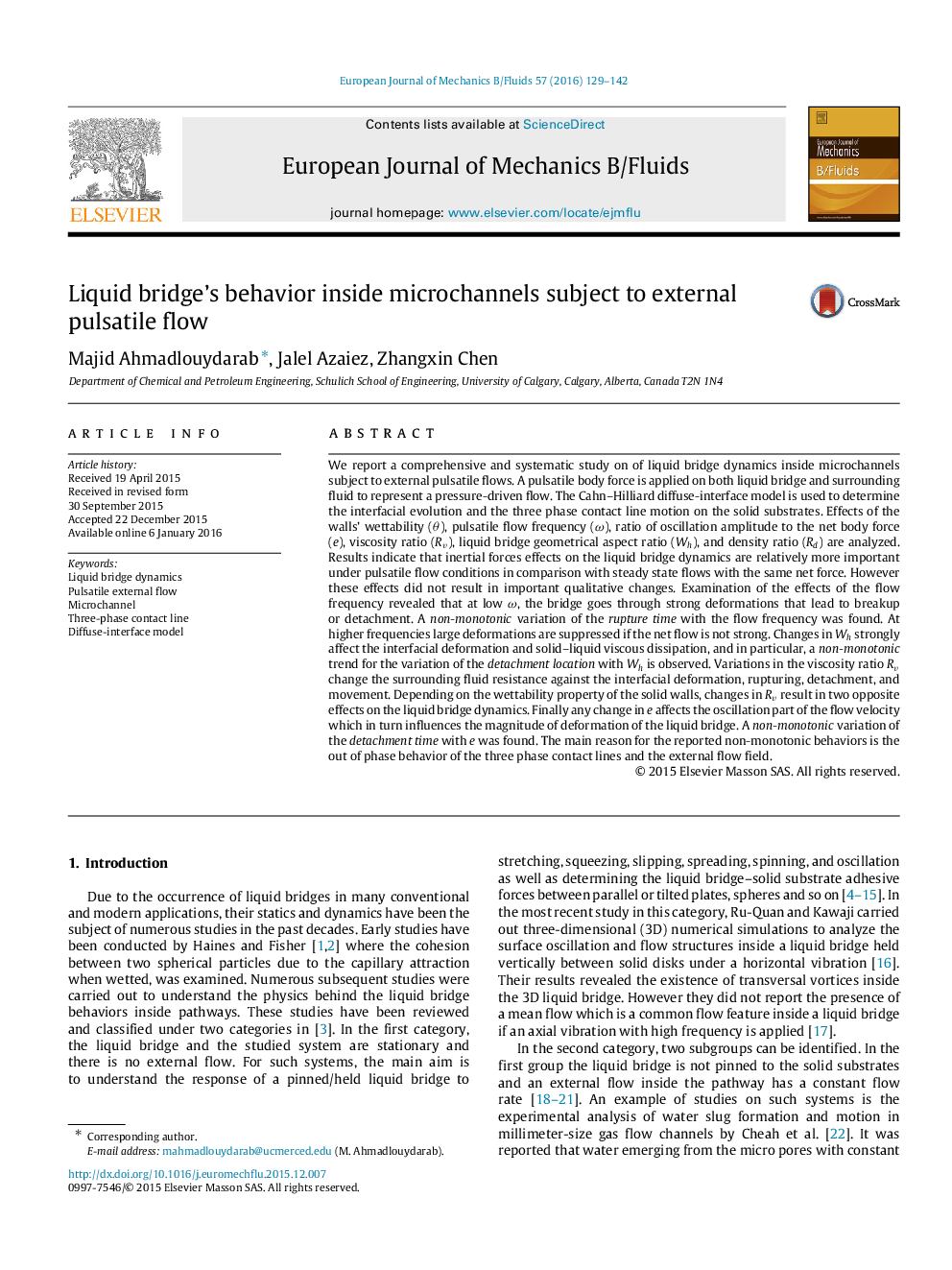| کد مقاله | کد نشریه | سال انتشار | مقاله انگلیسی | نسخه تمام متن |
|---|---|---|---|---|
| 650233 | 1457267 | 2016 | 14 صفحه PDF | دانلود رایگان |
عنوان انگلیسی مقاله ISI
Liquid bridge's behavior inside microchannels subject to external pulsatile flow
ترجمه فارسی عنوان
رفتار مایع پل در داخل میکرو کانالها به دلیل جریان بیضوی خارجی است
دانلود مقاله + سفارش ترجمه
دانلود مقاله ISI انگلیسی
رایگان برای ایرانیان
کلمات کلیدی
موضوعات مرتبط
مهندسی و علوم پایه
مهندسی شیمی
جریان سیال و فرایندهای انتقال
چکیده انگلیسی
We report a comprehensive and systematic study on of liquid bridge dynamics inside microchannels subject to external pulsatile flows. A pulsatile body force is applied on both liquid bridge and surrounding fluid to represent a pressure-driven flow. The Cahn-Hilliard diffuse-interface model is used to determine the interfacial evolution and the three phase contact line motion on the solid substrates. Effects of the walls' wettability (θ), pulsatile flow frequency (Ï), ratio of oscillation amplitude to the net body force (e), viscosity ratio (Rv), liquid bridge geometrical aspect ratio (Wh), and density ratio (Rd) are analyzed. Results indicate that inertial forces effects on the liquid bridge dynamics are relatively more important under pulsatile flow conditions in comparison with steady state flows with the same net force. However these effects did not result in important qualitative changes. Examination of the effects of the flow frequency revealed that at low Ï, the bridge goes through strong deformations that lead to breakup or detachment. A non-monotonic variation of the rupture time with the flow frequency was found. At higher frequencies large deformations are suppressed if the net flow is not strong. Changes in Wh strongly affect the interfacial deformation and solid-liquid viscous dissipation, and in particular, a non-monotonic trend for the variation of the detachment location with Wh is observed. Variations in the viscosity ratio Rv change the surrounding fluid resistance against the interfacial deformation, rupturing, detachment, and movement. Depending on the wettability property of the solid walls, changes in Rv result in two opposite effects on the liquid bridge dynamics. Finally any change in e affects the oscillation part of the flow velocity which in turn influences the magnitude of deformation of the liquid bridge. A non-monotonic variation of the detachment time with e was found. The main reason for the reported non-monotonic behaviors is the out of phase behavior of the three phase contact lines and the external flow field.
ناشر
Database: Elsevier - ScienceDirect (ساینس دایرکت)
Journal: European Journal of Mechanics - B/Fluids - Volume 57, MayâJune 2016, Pages 129-142
Journal: European Journal of Mechanics - B/Fluids - Volume 57, MayâJune 2016, Pages 129-142
نویسندگان
Majid Ahmadlouydarab, Jalel Azaiez, Zhangxin Chen,
